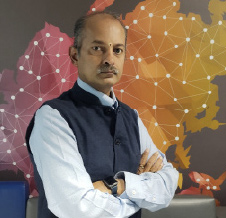
By Mr. Ashis Rout, SVP – Tech & Digital, HDFC Bank & Dr. Damodar Sahu, Co-Founder & CGO, Data Safeguard.
Introduction: The Privacy Paradox in BFSI
In the digital-first BFSI sector, trust isn’t just a virtue — it’s currency. With India’s Digital Personal Data Protection Act (DPDPA) now in play, financial institutions find themselves at the convergence of compliance, customer experience, and competitive differentiation.
The paradox? Banks and insurers are expected to know their customers deeply yet not overreach into their personal lives. This balancing act between personalization and protection is no longer optional — it’s existential.
Why BFSI Is Different
BFSI is not a typical data-consuming industry. It is data-native, and now, data-accountable.
● Banks don't just process data — they monetize trust.
● Insurers don’t just assess risk — they hold lifelines.
● NBFCs don't just lend money — they open gateways to aspiration.
Unlike retail or media, a breach of data in BFSI can collapse reputations, revoke licenses, and trigger systemic panic.
That’s why privacy for BFSI cannot be treated like a bolt-on control. It must become a core tenet of digital engineering and customer promise.
From Controls to Confidence: A Shift in Privacy Mindset
The traditional approach to privacy in BFSI has been checkbox compliance:
● Consent forms
● Annual privacy audit
● Encryption
But the DPDPA asks tougher questions:
● Do your customers understand what they’ve consented to?
● Can your frontline staff explain privacy in vernacular?
● Are your AI models aligned with purpose limitation and data minimization?
The real risk isn’t non-compliance — it’s false compliance. When software tools check boxes but miss context, the damage is deeper: trust erosion.
A New Architecture: Privacy by Design, Not Just Policy
The way forward lies in building privacy into the architecture — not just policy binders.
We propose a three-layer model for BFSI institutions:
1. Consent Must Flow Like Money
Just as money moves with authorizations, consent must follow the data trail — across systems, vendors, and time. This requires Universal Consent Orchestration with contextual logic:
● Purpose
● Duration
● Jurisdiction
No more static consent checkboxes. Privacy must move at the speed of data.
2. Privacy Impact as a Business Metric
Just as credit risk and cyber risk are measured, privacy risk must be quantifiable.
Every new product, every cross-sell algorithm, every chatbot rollout should trigger a real-time Privacy Impact Assessment (PIA) — not a retrospective exercise.
3. TrustOps: Operationalizing Privacy in Culture
Introduce TrustOps — the cultural layer.
● Privacy champions in every business unit
● Gamified training on DPDPA principles
● KPI-linked accountability for data handlers
This embeds privacy not just into code, but into behavior.
Why AI + BFSI Needs Guardrails, Not Just Acceleration
Generative AI, predictive models, and open banking APIs promise speed. But without algorithmic guardrails, BFSI could spiral into opaque automation and unintended profiling.
Hence, we need Explainable AI (XAI) and Auditable Automation — especially for:
● Loan decisions
● Claims approvals
● Fraud alerts
Here, AI should not replace trust — it must amplify it.
DPDPA as a Strategic Lever, Not a Constraint
The biggest myth? DPDPA will slow innovation.
The truth? If interpreted with foresight, it will fuel responsible innovation. For example:
● Embedded finance players can build in dynamic consent for data aggregation.
● Wealth managers can use privacy-preserving analytics for hyper-personalized insights.
● Insurtech firms can use synthetic data to train AI models without compromising real identities.
This is not just compliance readiness — it's market readiness.
The Path Forward: Co-Innovation Between Banks & Tech
This article isn’t just a perspective. It’s a call to co-create.
As BFSI leaders, we must:
● Move from policy documentation to platform transformation
● Bridge compliance officers with product managers and data scientists
● Foster privacy labs that test, break, and strengthen digital trust models
At Data Safeguard, we have frameworks where legal understanding, tech tooling, and human ethics converge.
Because the future of BFSI isn’t just fintech — it’s trust-tech.
Conclusion: Trust is the New Credit Score
In the coming decade, institutions won’t just be judged on growth and profitability — but on how well they protect what matters most: the customer’s dignity, identity, and agency.
Privacy is not a check to clear. It’s a promise to keep.
Privacy is a journey — it may begin with the DPDP Act, but it must evolve with the business for as long as the business lives.
Let’s make India’s BFSI sector not only the most digital — but also the most trustworthy.
See What’s Next in Tech With the Fast Forward Newsletter
Tweets From @varindiamag
Nothing to see here - yet
When they Tweet, their Tweets will show up here.




























